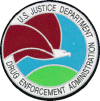|
 September
1994 September
1994
OPERATION
FOXHUNT "ZORRO"
In September 1994,
the DEA concluded Operation Foxhunt -- a two-year investigation of a major
Cali mafia transportation operation based in Los Angeles. The investigation
targeted two cell transportation directors from Colombia who were responsible
for the movement of multi-ton quantities of cocaine from main distribution
points in Los Angeles to wholesale distribution centers in New York City,
San Francisco, and Chicago. The drugs were then moved to consumer distribution
points in cities such as St. Louis, Missouri; Newark, New Jersey; San
Antonio, Texas; Washington, D.C.; and New Orleans, Louisiana.
Operation Foxhunt
specifically targeted two transportation cell directors in Los Angeles.
The operation took its name from one of the investigation's primary targets,
Diego Fernando Salazar-Izquierdo, a Cali transportation cell director
in Los Angeles, known as "Zorro," which is Spanish for "fox." The second
cell director, Over Arturo Acuna, referred to as Arturo, directed parallel
drug operations in Los Angeles. Both Zorro and Arturo reported directly
to drug lords in Cali, Colombia.
It took two years
and 31 concurrent investigations to identify and arrest Zorro because
the Cali operatives segmented organizations in order to avoid detection
and used sophisticated systems of fax lines and cellular communications
to foil wiretaps. They also used computer software to "clone" - steal
- the telephone numbers of unsuspecting individuals. By the time the investigation
concluded, 6.5 tons of cocaine and over $13.5 million had been seized,
and 191 suspects, including both Zorro and Arturo, had been arrested.
Fifty-five federal, state, and local agencies participated in this investigation.
|

